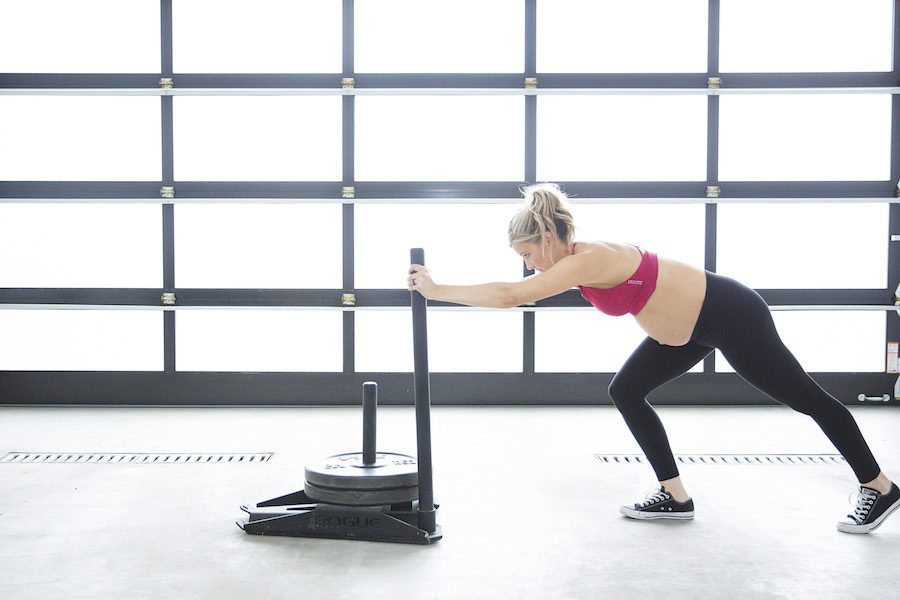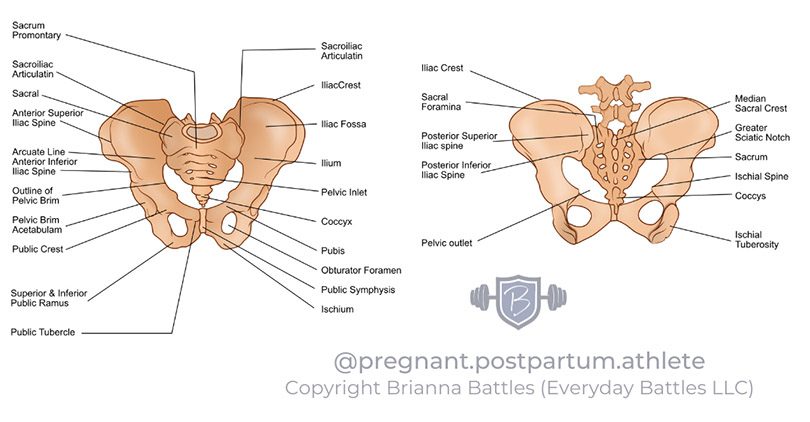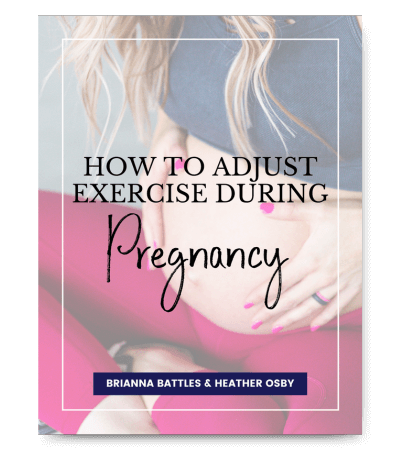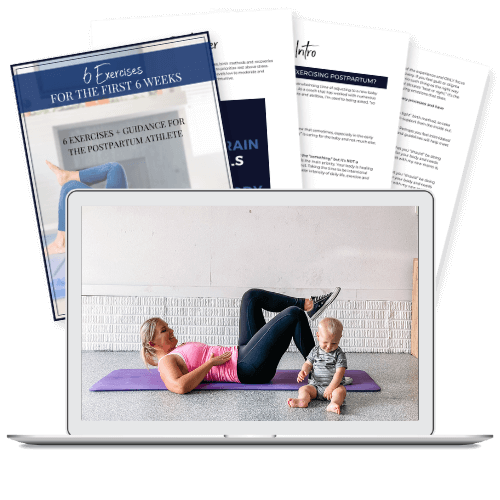
Pelvic floor pain during pregnancy may seem like a normal thing, but there are exercises and lifestyle tips to help you manage that pain. It’s not something you just have to live with!
Let’s take a look at some of the more common types of pelvic floor pain you may experience during pregnancy and what you can do to help manage it.
Is pelvic floor pain normal?
As your pregnancy progresses, pressure from the growing baby and growing belly puts extra strain on the pelvic floor and pubic bone. That extra pressure is a normal part of pregnancy.
However, just because excess pressure on the pelvic floor is normal, doesn’t mean pain needs to be normalized.You can have pressure without pain. You can also find ways to help reduce pressure down into your pelvic floor during your workouts.
If you’re experiencing pelvic pain during pregnancy, the first step is to check in with your medical provider. A pelvic floor physical therapist or occupational therapist is also recommended.
Pelvic floor therapy during pregnancy can help to greatly reduce pain caused by multiple factors as well as help to prepare your pelvic floor for delivery.
What causes pelvic floor pain?

There are numerous possible causes for pelvic floor pain during pregnancy. Let’s look at the 3 most common:
Symphysis Pubis Dysfunction
There’s a space between the right and left side of your pubic bones at the bottom. This is called the pubic symphysis.
During pregnancy, you can sometimes have more than normal movement at this space creating pain with movement, especially single leg movement. Many people describe this pain as a sharp stabbing pain in the crotch earning symphysis pubis dysfunction the nickname “lightning crotch”.
Pelvic Floor Tension
It may seem like you want to maintain a tight pelvic floor, but pelvic floor tension can actually contribute to pelvic floor pain. Instead of doing a high volume of kegels or subconsciously holding tension in your pelvic floor throughout the day, aim for a coordinated pelvic floor – one that contracts when needed and relaxes as well.
Sacroiliac Joint Pain
The sacroiliac joint is where the hip bone meets the sacrum. Pain here can feel like a sharp pain in the back of the pelvis and may or may not travel down the thigh.
What can I do to help?
Lifestyle Adjustments
Here are simple lifestyle adjustments that you can make to help manage pelvic pain during pregnancy:
- Wear supportive shoes with little to no heal
- Sit down when putting on pants
- Keep both legs together when getting in and out of a car or bed
- Sleep with a pregnancy pillow or a pillow between your knees
- Wear a support belt or undergarments
- Stop sucking in your belly, clenching your glutes, and tensing your pelvic floor throughout the day
- Reduce stress
Exercises to Help Pelvic Floor Pain During Pregnancy
Strengthening your core and glutes and practicing pelvic floor relaxation can be a great place to start to help manage pelvic floor pain in pregnancy.
Glutes
While you may feel more comfortable reducing single leg exercises if you’re experiencing certain types of pelvic pain during pregnancy, you can still strengthen your glutes to help support your pelvis.
- Side Lying Hip Abduction
Using a ball with this side lying hip abduction helps to give compression around the pelvis while also strengthening through a full range of motion
Core
You want to focus on the deep core muscles when navigating pelvic pain. Try this exercise:
- Kneeling Hip Thrust with Banded Pull Down
Take a big 360 degree inhale then exhale just before you start to thrust. Continue your exhale as you complete the thrust and band pull. As you exhale, gently contract your transverse abdominis muscles.
Pelvic Floor Relaxation
Visualization can be really helpful when trying to focus on relaxing the pelvic floor. Try this exercise below:
- Supported Child’s Pose
Take a big diaphragmatic inhale to lengthen the muscles of the pelvic floor. Then slowly exhale as you let some of that tension within your body go.
Note – You’re not bearing down into the pelvic floor here. Instead, you’re allowing your pelvic floor to naturally expand as your diaphragm lowers. Can’t focus on your pelvic floor? Focus on relaxing your glutes here instead.
You don’t have to put up with pelvic pain as a normal part of pregnancy. These lifestyle factors and exercises can help you manage pelvic pain during your pregnancy and beyond.
Want to learn more ways to navigate symptoms that occur during pregnancy?
Learn how to continue the workouts you love during pregnancy while keeping your body and baby safe with our free guide: How to Adjust Exercise in Pregnancy.

Read More: Core and Pelvic Floor Basics
<script async data-uid="e435469505" src="https://twilight-shape-2657.ck.page/e435469505/index.js"></script>



